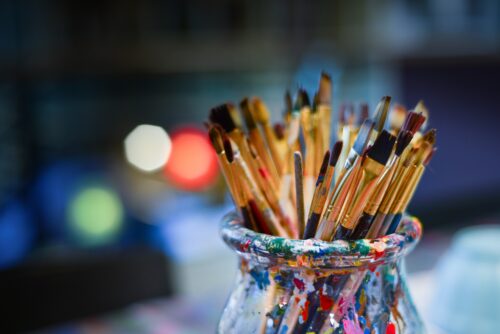Artistic Expression for Mental Health: Unlocking the Benefits of Therapy
February 16, 2023
Artistic expression has been linked to mental health and well-being for centuries, and it’s no surprise that many mental health professionals incorporate creative therapies in their practice. From painting and drawing to dancing and writing, there are countless ways to express ourselves artistically and unlock the benefits of therapy. In this article, we’ll explore the ways in which artistic expression can improve mental health, boost mood, and promote overall well-being.

The Benefits of Artistic Expression for Mental Health
Artistic expression has been linked to a range of mental health benefits. Studies have shown that engaging in creative activities can help to reduce symptoms of depression, anxiety, and stress. It can also promote self-awareness, build self-esteem, and increase feelings of well-being. The act of creating something can be a powerful tool for managing emotions, as it provides a safe and healthy outlet for expressing difficult feelings.
Here are some of the benefits of artistic expression and why they are beneficial:
- Provides a healthy outlet for expressing emotions: Artistic expression can provide a safe and healthy way to express difficult emotions that may be challenging to express through words.
- Helps to reduce symptoms of depression, anxiety, and stress: Artistic expression has been shown to reduce symptoms of depression, anxiety, and stress by promoting relaxation and providing a sense of accomplishment.
- Promotes self-awareness and self-discovery: Engaging in artistic expression can help individuals explore their emotions, thoughts, and experiences, leading to greater self-awareness and self-discovery.
- Improved mood: Engaging in creative activities has been shown to boost mood and promote feelings of happiness and well-being. Creating art can give individuals a sense of accomplishment and can be a source of joy and fulfillment.
- Increased resilience: Artistic expression can help individuals to develop resilience and cope with difficult situations. It can be a source of strength and a way to work through challenging emotions.
- Improved cognitive function: Engaging in creative activities has been shown to improve cognitive function and memory. Creating art can be a mentally stimulating activity that requires focus and attention.
- Increased social connections: Artistic expression can be a social activity that brings people together. It can provide opportunities to connect with others and build meaningful relationships.

Using Art as a Therapeutic Medium
Art therapy is a form of therapy that uses the creative process of making art to improve mental, emotional, and physical health. It can be used to help people of all ages and backgrounds, from children to the elderly, and is often incorporated into mental health treatment plans. Art therapists work with clients to use various materials, techniques, and forms of art to explore their emotions and experiences, and to promote self-expression and healing.
The Different Forms of Artistic Expression
There are many different forms of artistic expression that can be used as a therapeutic tool. Some common forms of art therapy include:
- Visual arts: This includes painting, drawing, sculpture, printmaking, photography, and digital art.
- Performing arts: This includes dance, music, theater, opera, and comedy.
- Literary arts: This includes writing, poetry, and spoken word.
- Crafts: This includes activities such as woodworking, pottery, jewelry-making, and textiles.
- Culinary arts: This includes cooking and baking, as well as food presentation.
- Architecture: This includes the design and construction of buildings and structures.
- Film and video: This includes the creation of movies, documentaries, and video art.
- Design: This includes graphic design, fashion design, and interior design.
- Mixed media: This involves combining multiple forms of art into a single piece, such as a collage or multimedia installation.

Tips for Incorporating Artistic Expression into Your Life
Even if you’re not working with an art therapist, you can still use artistic expression as a tool for mental health and well-being. Here are some tips for incorporating art into your life:
- Make time for creativity: Set aside time each week to engage in creative activities that you enjoy.
- Experiment with different forms of art: Try different forms of art to find what works best for you. You may find that you enjoy painting one week and writing the next.
- Don’t worry about the outcome: The goal of artistic expression is not to create a masterpiece, but to express yourself and promote well-being. Don’t worry about whether your art is “good” or not.
- Focus on the process: The act of creating something can be just as important as the finished product. Enjoy the process of creating, and don’t worry about the end result.
- Use art as a way to manage stress: Artistic expression can be a powerful tool for managing stress and promoting relaxation. Use it as a way to unwind after a long day or week.
Conclusion
Artistic expression can be a powerful tool for promoting mental health and well-being. Whether you’re working with an art therapist or engaging in creative activities on your own, there are countless benefits to using art as a therapeutic medium. By exploring the different forms of art and making time for creativity in your life, you can unlock the benefits of therapy and promote overall well-being.